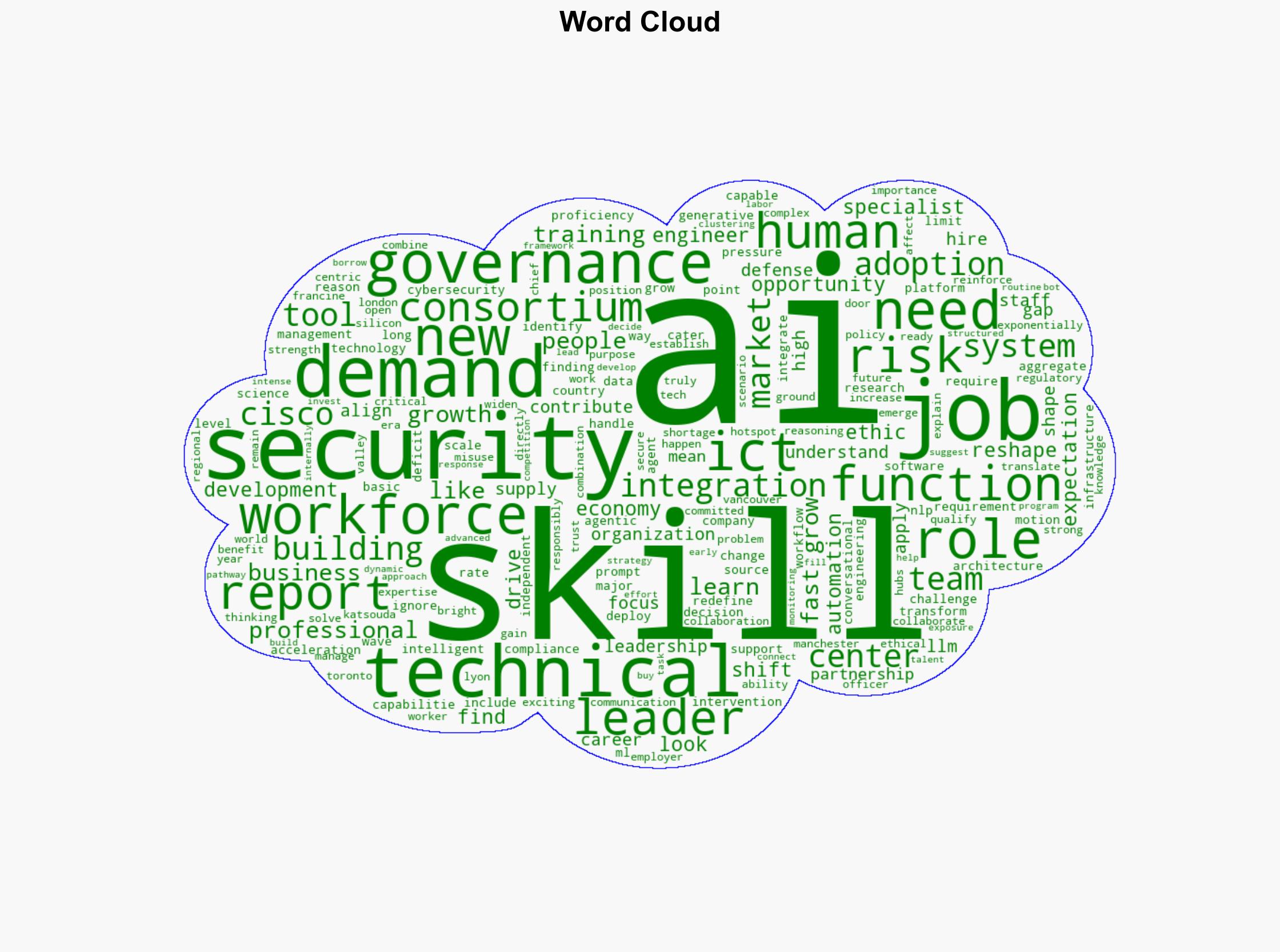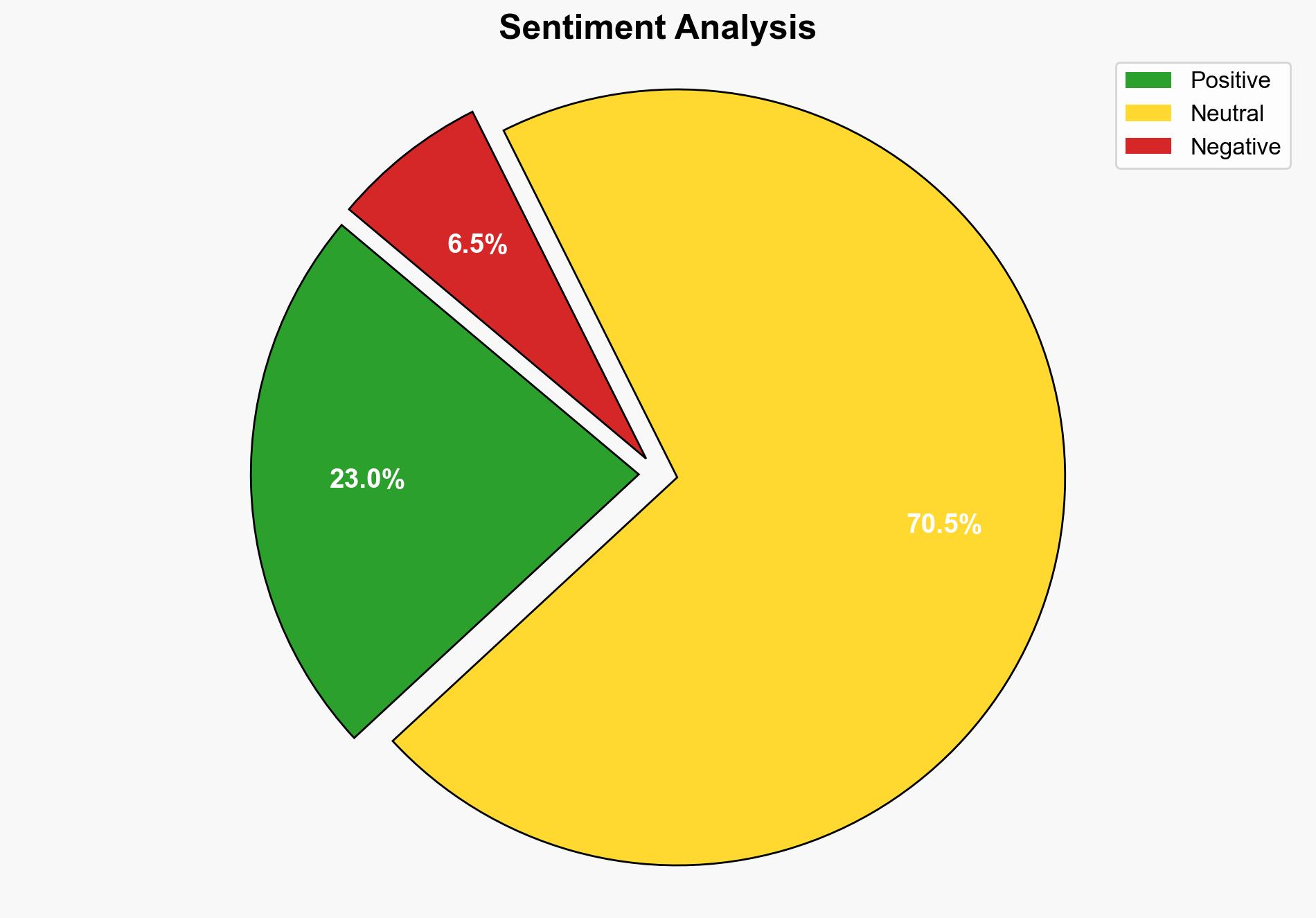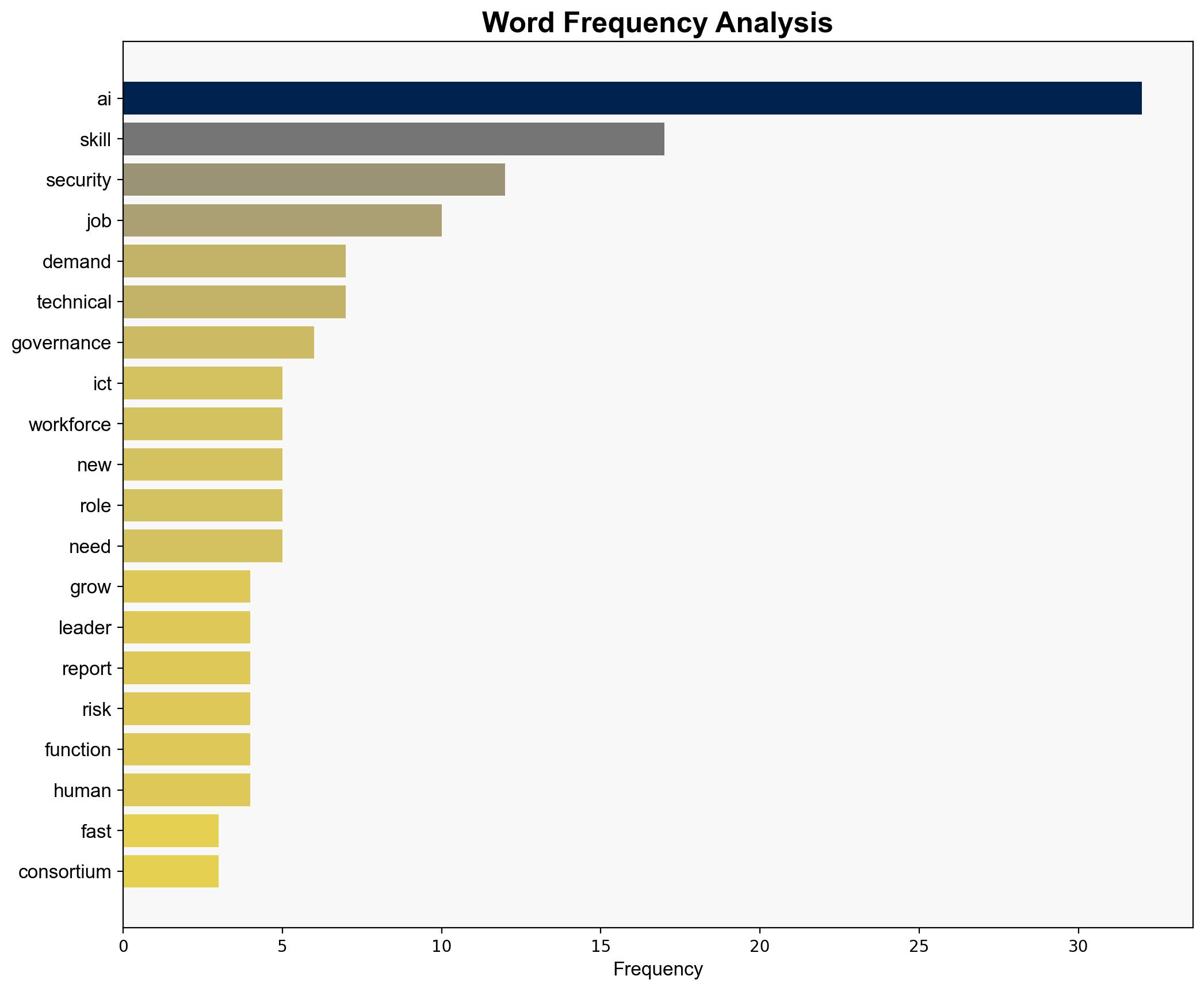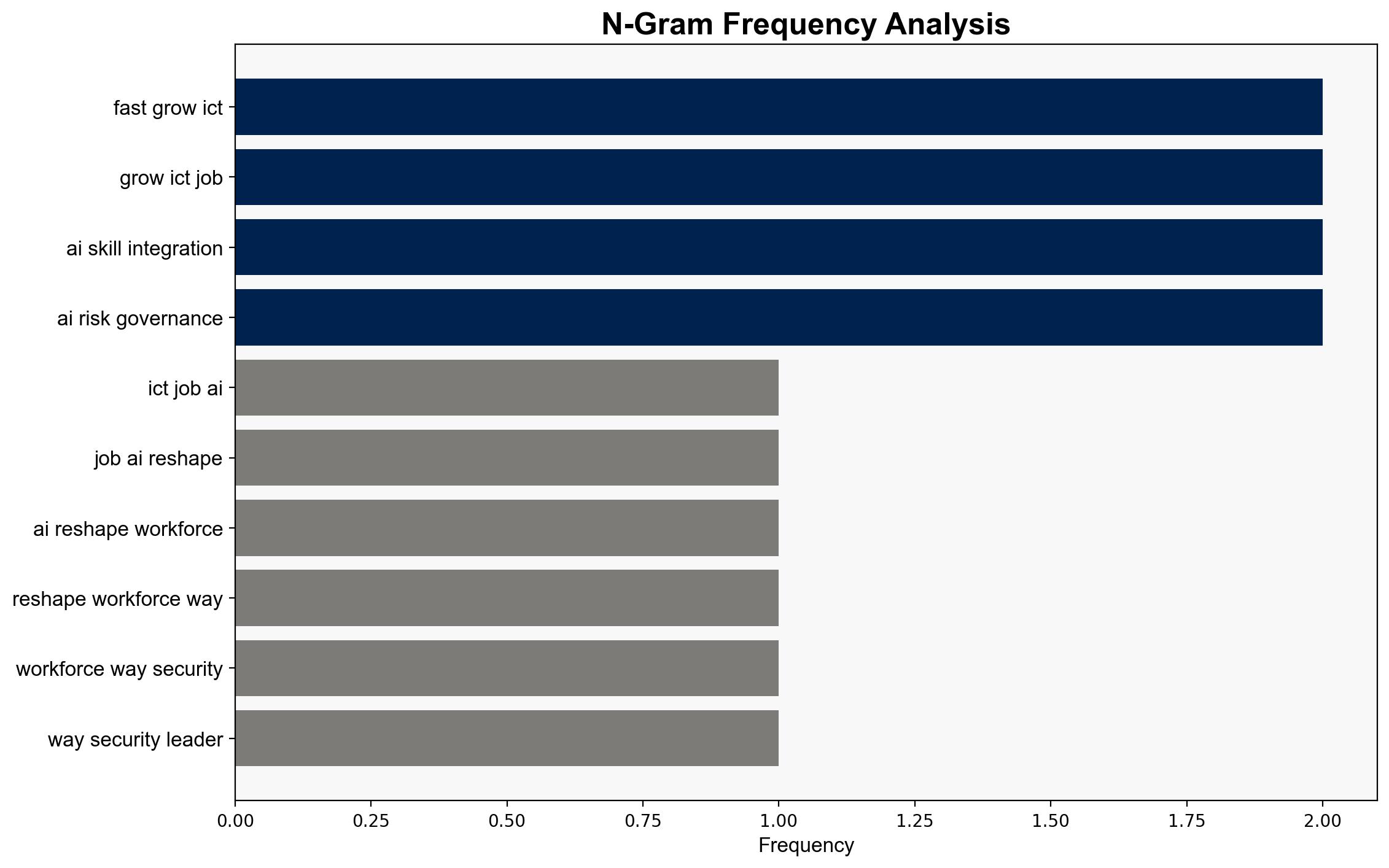Top 10 fastest growing ICT jobs – Help Net Security
Published on: 2025-09-29
Intelligence Report: Top 10 fastest growing ICT jobs – Help Net Security
1. BLUF (Bottom Line Up Front)
The integration of AI into ICT roles is reshaping job functions and creating a significant demand for AI-related skills. The most supported hypothesis is that AI will drive the evolution of ICT roles, necessitating a blend of technical and human-centric skills. Confidence Level: High. Recommended action: Develop comprehensive training programs to bridge the skills gap and ensure workforce readiness for AI-driven roles.
2. Competing Hypotheses
Hypothesis 1: AI integration will primarily transform ICT roles by increasing the demand for technical skills such as AI/ML engineering, NLP, and AI governance, leading to a skills deficit in the market.
Hypothesis 2: AI integration will not only require technical skills but also emphasize human-centric skills like communication, critical thinking, and ethical reasoning, reshaping ICT roles into hybrid positions.
Using ACH 2.0, Hypothesis 2 is better supported due to the emphasis on both technical and human skills in the source, indicating a broader transformation of roles beyond technical capabilities alone.
3. Key Assumptions and Red Flags
Assumptions:
– AI skills will continue to evolve and be in high demand.
– Organizations will prioritize AI skill integration in their workforce.
Red Flags:
– Potential overestimation of the speed at which AI skills can be integrated into the workforce.
– Lack of emphasis on the role of regulatory frameworks in shaping AI job roles.
4. Implications and Strategic Risks
The rapid integration of AI in ICT roles may lead to a skills gap, affecting organizational capabilities and competitive advantage. There is a risk of economic disruption if the workforce cannot adapt quickly. Geopolitically, regions with advanced AI training programs may gain a competitive edge, influencing global talent distribution.
5. Recommendations and Outlook
- Invest in AI-focused training and development programs to bridge the skills gap.
- Promote partnerships between educational institutions and industry leaders to align curricula with market needs.
- Best-case scenario: Successful integration of AI skills, leading to enhanced productivity and innovation.
- Worst-case scenario: Persistent skills gap resulting in economic and competitive disadvantages.
- Most likely scenario: Gradual adaptation with mixed outcomes across different regions and sectors.
6. Key Individuals and Entities
Francine Katsouda is noted for her role in emphasizing the importance of combining technical expertise with human-centric skills in AI job roles.
7. Thematic Tags
national security threats, cybersecurity, counter-terrorism, regional focus





